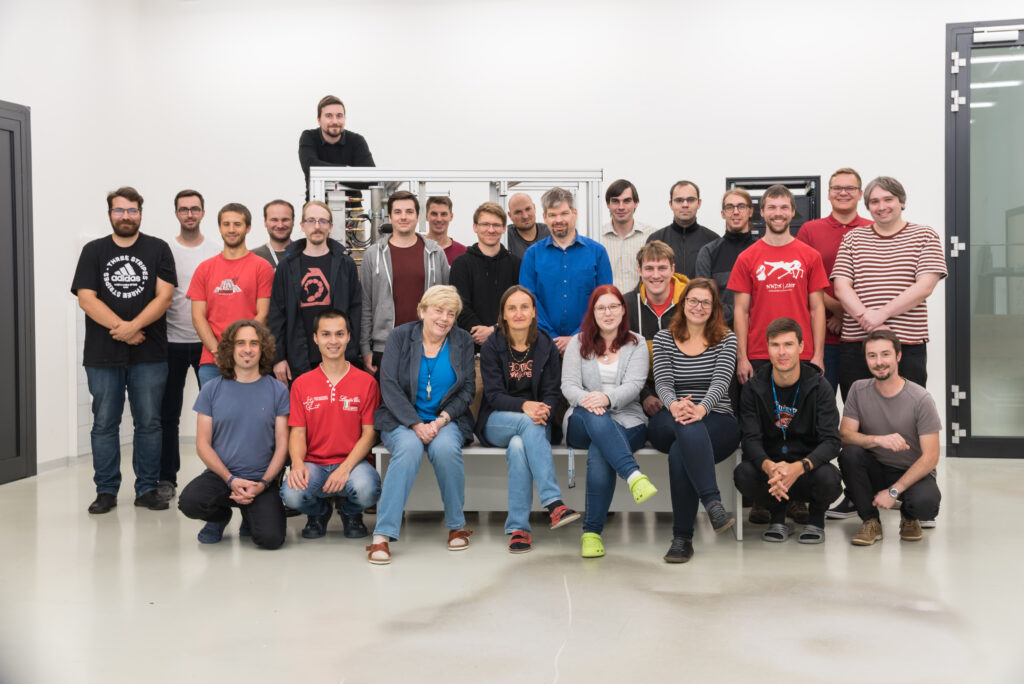I’ve had the good fortune to be a part of TEM development at TESCAN right from the beginning, and in this brief look I’ll try to give you a feel for what our goal has been and what I think this project means to the company.
The foundation was laid eight years ago
It was the summer of 2014 when Mr. Klíma came looking for volunteers to take on the task of developing a transmission electron microscope (TEM). A small team – I think there were nine of us – was formed at TESCAN Brno in response to this challenge, and I have to admit we knew almost nothing about how to go about building a TEM. Some of us had just completed a project that involved developing a 100-keV electron gun and a high-voltage power source. Around that time TESCAN also acquired AppFive (now TESCAN Tempe), which developed software for the TEM community, particularly for electron diffraction and its applications. In autumn 2014 we all met in Brno, and in a series of meetings we put together the device concept, making the most of what knowledge TESCAN had acquired in the development of SEM and the 100 keV gun, and AppFive’s knowledge in the field of TEM, especially in electron diffraction. This, we believed, had a chance to stand up to the tough competition in TEM. I must admit that the concept was bold, but we were confident, and we still are, that this was a chance to succeed in this market. If we just copied what competitors do, we wouldn’t have had much chance of success against established producers. I’m really proud that we decided to go our own way and differentiate our TEM from the competition. Moreover, recent trends that we can see in conferences and exhibitions suggest that it was the right decision. Similarly, the reaction of people from both scientific and industrial backgrounds who have had the opportunity to see a demo confirm that it is a worthwhile concept. Which is why I continue to believe that it will gradually prove its business value as well.
Over time the team has grown to three times its size
You may wonder what it means for TESCAN to develop a TEM. When we began in late 2014, the TEM team was about 15 strong, including colleagues from Tempe. Today there are over 45 people on the team. Almost all those who joined between 2015 and 2022 were newcomers, and today many of them are already experienced developers. The intensity of the project attracted highly talented experts from various fields to TESCAN, and I must say it is a pleasure to work with them. Initially I thought it would be the technical success that would give me the greatest pleasure, but I must admit it’s being part of the team as “pioneers” and seeing what we have been able to build over nearly eight years at TESCAN that delights me the most. It’s heartwarming to see them tackle the challenges of developing such a sophisticated device so quickly and accurately. Together, over eight years, we have built a scanning transmission electron microscope (STEM) that is unique in some respects and is currently the only one of its kind in the world. Most of its components have been developed from scratch, and it is a completely modular platform. Thanks to this, TESCAN has now laid down a solid foundation upon which it can build a plethora of amazing products in both scanning and transmission electron microscopy.

During this development we were able to rely on the excellent know-how of colleagues from SEM R&D with regard to scanning and synchronization of data flows from detectors as well as in other areas. TESCAN is traditionally strong in this area, and it would not have been possible without this knowledge. TEM naturally builds on and expands the wide range of expertise that TESCAN has acquired in its 30-year history. And believe me, although we are relatively small compared to our competitors, our proficiency is world class and there’s no need to hide that under a bushel.
